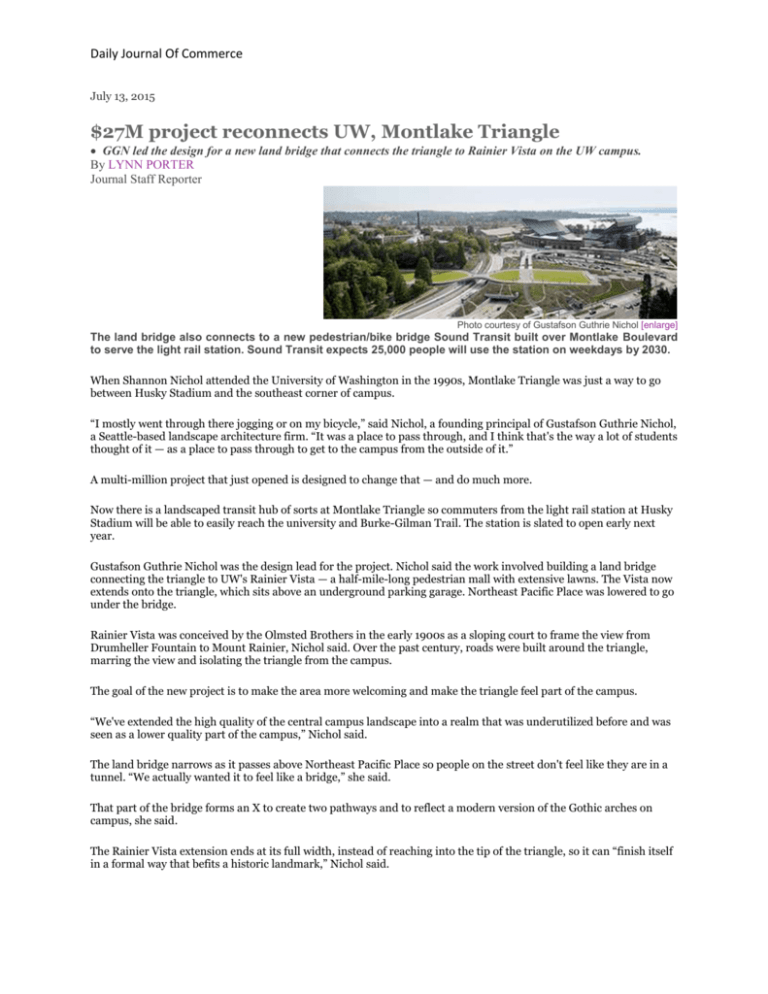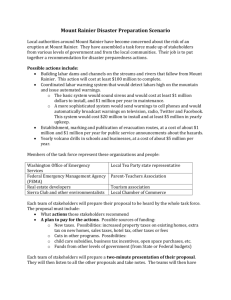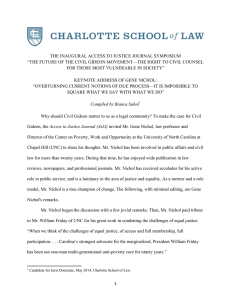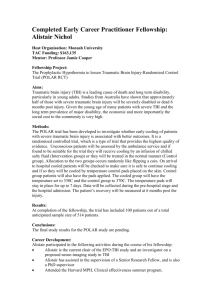27M Project Connects UW with Montlake Triangle 7-13-2015 - LID I-5
advertisement

Daily Journal Of Commerce July 13, 2015 $27M project reconnects UW, Montlake Triangle GGN led the design for a new land bridge that connects the triangle to Rainier Vista on the UW campus. By LYNN PORTER Journal Staff Reporter Photo courtesy of Gustafson Guthrie Nichol [enlarge] The land bridge also connects to a new pedestrian/bike bridge Sound Transit built over Montlake Boulevard to serve the light rail station. Sound Transit expects 25,000 people will use the station on weekdays by 2030. When Shannon Nichol attended the University of Washington in the 1990s, Montlake Triangle was just a way to go between Husky Stadium and the southeast corner of campus. “I mostly went through there jogging or on my bicycle,” said Nichol, a founding principal of Gustafson Guthrie Nichol, a Seattle-based landscape architecture firm. “It was a place to pass through, and I think that's the way a lot of students thought of it — as a place to pass through to get to the campus from the outside of it.” A multi-million project that just opened is designed to change that — and do much more. Now there is a landscaped transit hub of sorts at Montlake Triangle so commuters from the light rail station at Husky Stadium will be able to easily reach the university and Burke-Gilman Trail. The station is slated to open early next year. Gustafson Guthrie Nichol was the design lead for the project. Nichol said the work involved building a land bridge connecting the triangle to UW's Rainier Vista — a half-mile-long pedestrian mall with extensive lawns. The Vista now extends onto the triangle, which sits above an underground parking garage. Northeast Pacific Place was lowered to go under the bridge. Rainier Vista was conceived by the Olmsted Brothers in the early 1900s as a sloping court to frame the view from Drumheller Fountain to Mount Rainier, Nichol said. Over the past century, roads were built around the triangle, marring the view and isolating the triangle from the campus. The goal of the new project is to make the area more welcoming and make the triangle feel part of the campus. “We've extended the high quality of the central campus landscape into a realm that was underutilized before and was seen as a lower quality part of the campus,” Nichol said. The land bridge narrows as it passes above Northeast Pacific Place so people on the street don't feel like they are in a tunnel. “We actually wanted it to feel like a bridge,” she said. That part of the bridge forms an X to create two pathways and to reflect a modern version of the Gothic arches on campus, she said. The Rainier Vista extension ends at its full width, instead of reaching into the tip of the triangle, so it can “finish itself in a formal way that befits a historic landmark,” Nichol said. Daily Journal Of Commerce Fast growing native trees were planted along the extension to carry the forest canopy to the new area and better frame the vista. A sunken road that bisected the mall was filled in and regraded to create subtle terraces and amphitheaters that flow down the lawn. They help to improve the view, and can be used for events or just hanging out. There are bike/pedestrian paths along the edges of Rainier Vista, as well as native plantings, gardens and customdesigned precast concrete benches with a Gothic influence. The land bridge connects to a new curved pedestrian/bike bridge Sound Transit built over Montlake Boulevard to serve the light rail station. Bruce Gray of Sound Transit said that bridge is expected to open this month. The agency expects 25,000 people to use the station on weekdays by 2030. GGN Principal Bernie Alonzo said part of Burke Gilman Trail that runs from Montlake Boulevard Northeast and Northeast Pacific Street on the campus was improved, and lowered but not as much as Northeast Pacific Place. The trail was widened, shoulders added and surfaces upgraded, with asphalt for cyclists and concrete for pedestrians to visually segregate the uses. Alonzo said a lot more pedestrians will use Montlake Triangle after the station opens, and there will be more bus stops on Northeast Pacific Street and Montlake Boulevard Northeast. The Burke-Gilman now crosses below Rainier Vista so trail users won't impede light rail and bus commuters, and vice versa, he said. The land bridge and associated work, Rainier Vista work and trail improvements cost $27.3 million, according to the University of Washington. The Sound Transit bridge and related work cost $13.9 million. There's also $1.3 million in related costs, including permitting. Washington State Department of Transportation paid $26.5 million of the total, Sound Transit paid $12 million, and the University of Washington paid $4 million. KPFF Consulting Engineers was the structural and civil engineer and prime administrator on the Rainier Vista/land bridge project. A joint venture of Sellen Construction Co. and Gary Merlino Construction Co. was the general contractor. The team also included Shannon & Wilson, geotechnical engineer; AEI Affiliated Engineers/Pivotal Lighting Design, electrical engineer and lighting designer; LTK Engineering Services, trolley systems engineer; SvR Design Co., predesign; Michael Van Valkenburgh Associates, conceptual plan; and UW Office of the University Architect, project leadership. Nichol said she has always thought of Rainier Vista as a quiet place owned by the forest, and GGN designed the extension with that in mind. Now the mall also has the feel of a room, she said, with edges and a center — a place to walk though, people watch, stop, rest and play. Nichol said she is interested to see how people will react. “I always like to let people tell me themselves.” Lynn Porter can be reached by email or by phone at (206) 622-8272.









